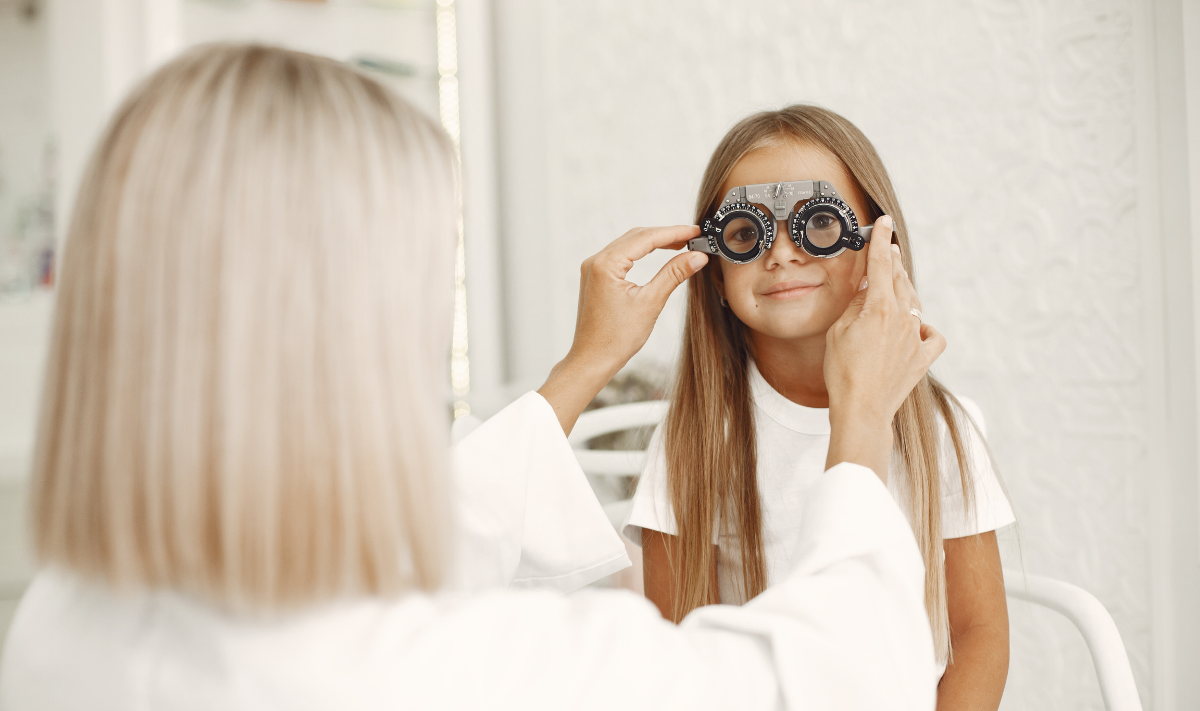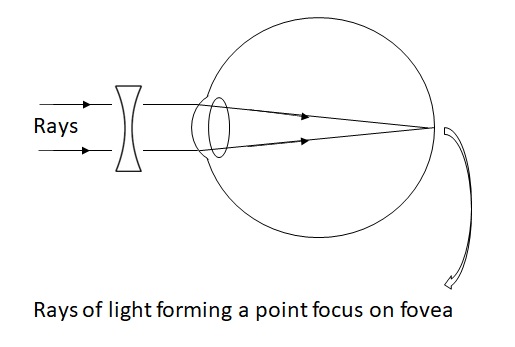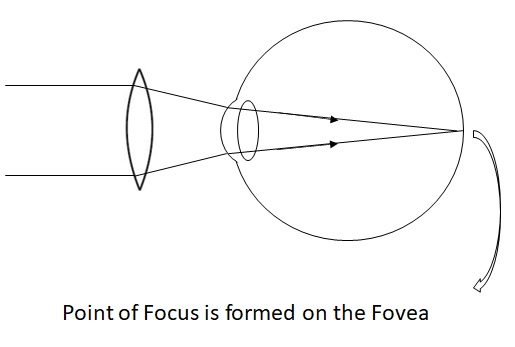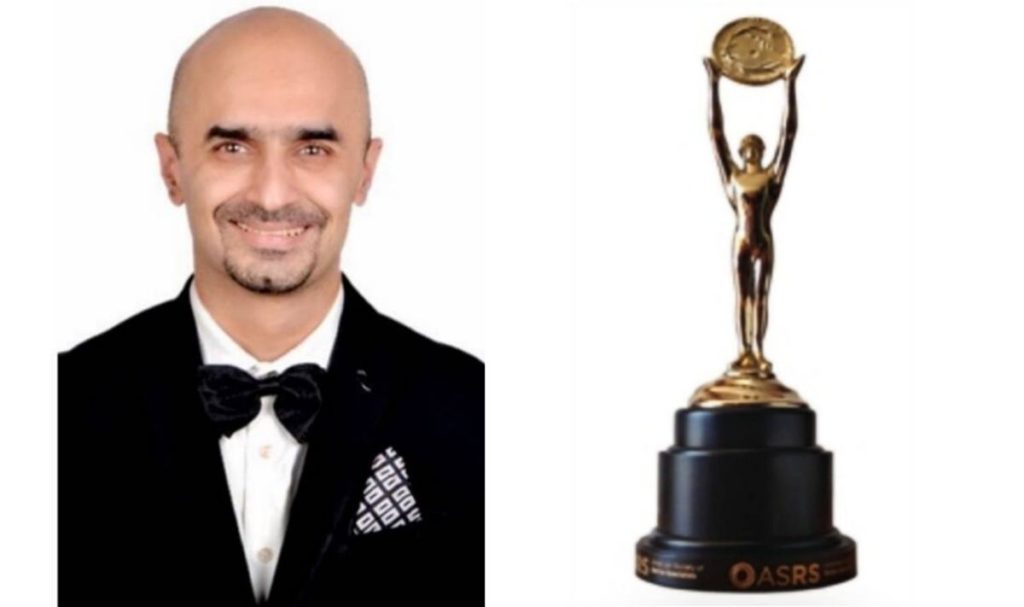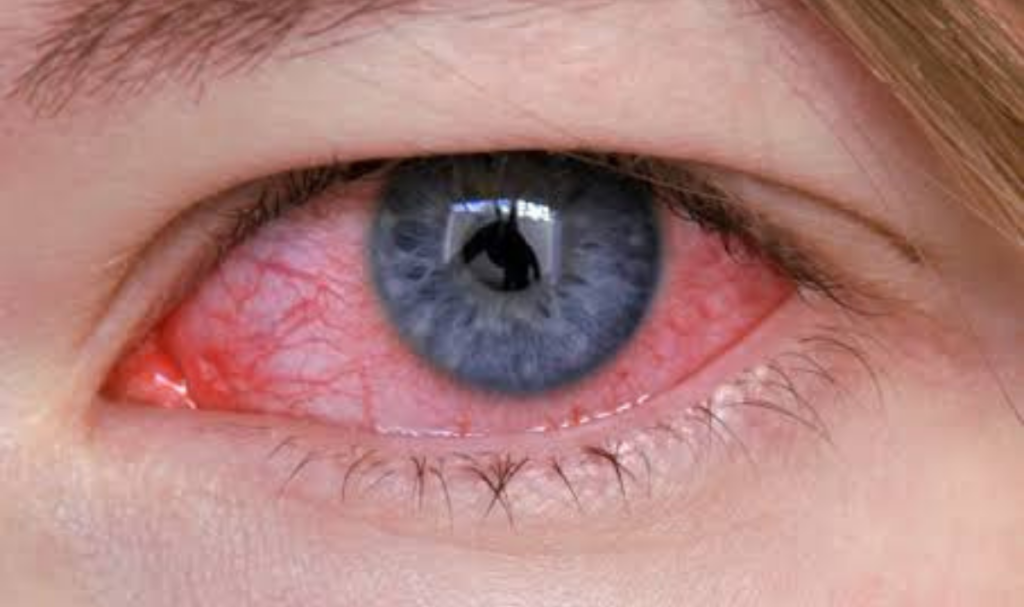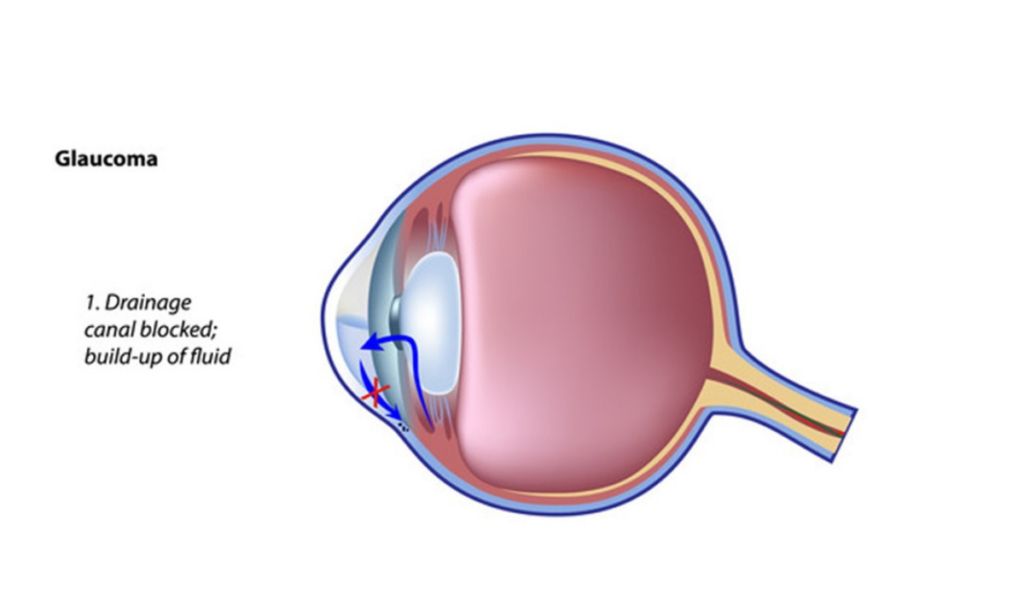My Child Has Glasses
Children usually inherit glasses from their parents. If either parent has glasses, then there is a fair chance that the children will get them. If both parents have glasses, the chances of the kids having glasses are more.
Sometimes parents do not have glasses, apparently neither do anyone else in the family, yet the child get them. This is also a possibility as heredity is not the only causative factor there could be many more reasons yet unearthed.
Let us try to understand the reason how people get glasses with diagrams
The below diagram shows the optics of the normal eye. Rays of light form a point of focus on the retina (sensitive part of eye), and therefore the eye can see clearly without any aid.
In a myopic eye (short sightedness), the axial length of the eye is larger than normal. Thus the rays of light do not form a point focus on the fovea, and so the eyesight is blurry. The adjacent diagram shows how point focus is formed in front of fovea, not on the fovea.
When we put a concave lens (minus number lens) in front of the eye, the rays of light falling on the eye, make a point focus on the retina, thus enabling the eye to see clearly.
In a hypermetropic eye (long sightedness), the axial length of the eye is smaller. Hence the rays of light falling on the retina do not form a point focus on the retina and therefore the vision is blurry.
But, when a convex lens (plus number glass) is placed in iron t of the eye, the eye can see clearly.
Thus, having minus powered glasses or plus powered glasses depend upon the length of the eyeball.
There is one more type of refractive error, as is called in medical terms and that is Astigmatism.
People often get worried if they have astigmatism, but it is not always a cause for concern. The cornea has two radii of curvature-horizontal and vertical. When these two radii are not balanced, that is, one meridian is steeper than the other, the condition is called astigmatism. The patient perceives seeing shadows around objects or straight lines appear slanting. This is remedied by adding Cylindrical lenses which have power only in one meridian. Astigmatism correlates with the shape of the eyeball.
Usually, the number does not disappear only because the child has been wearing glasses all the time. Watching TV for long hours or spending a lot of time in front of computers or smart phones every day cannot induce a number in the eyes. Carrots, though they contain vitamins and essential nutrients, do not contribute towards needing glasses or otherwise.
Similarly, even if a child with glasses eats carrots daily, the number will not disappear as that is not the contributing factor. However, daily outdoor activity of at least 45 minutes is very important for children, more so if they have glasses. This is so, because, studies done worldwide have shown that spending excessive time indoors doing near activities like reading , watching screens for a long time does induce an increase in the glasses power and outdoor activities provide some respite from the constant strain that these near activities pose on these growing eyes!
Now a days there are certain eye drops which can be prescribed to children with progressive myopia (the minus number increasing rapidly over a short span of time is progressive myopia, in short) which help curtail the growth of the glasses power. These drops are an adjuvant to other precautions to be taken like limiting screen time, avoiding writing and reading in dim light, daily outdoor activity which can prevent from the number increasing too rapidly.
Despite these precautions , the glasses will increase in power as the child grows. As illustrated earlier, having glasses is an optical phenomenon, related to the length of the eyeball. As the child grows, his eyeball also increases in length and hence till he /she is 18 years (in some cases 21 years), the number also increases. The number stops increasing after 18 to 20 years of age is attained. Laser procedures to get rid of glasses can be done after this age after a few tests which tell us vital information whether the procedure can be safely carried out in that individual.
© Dr. Jai Kelkar

